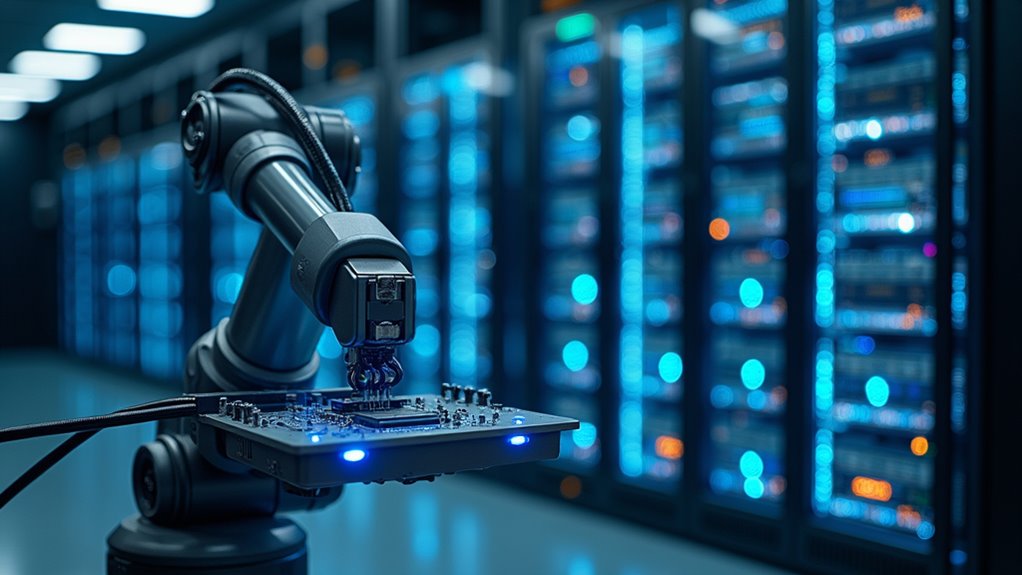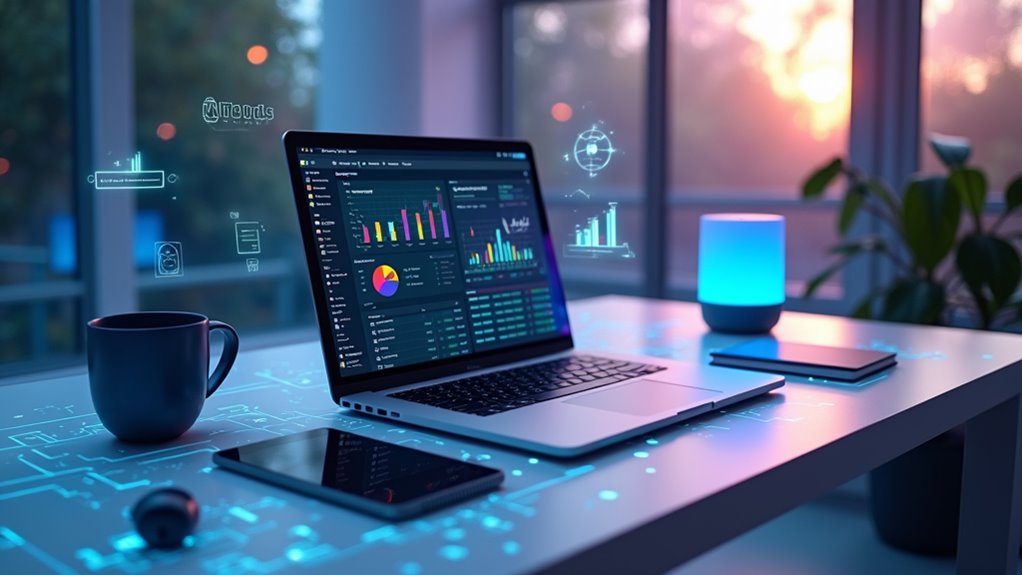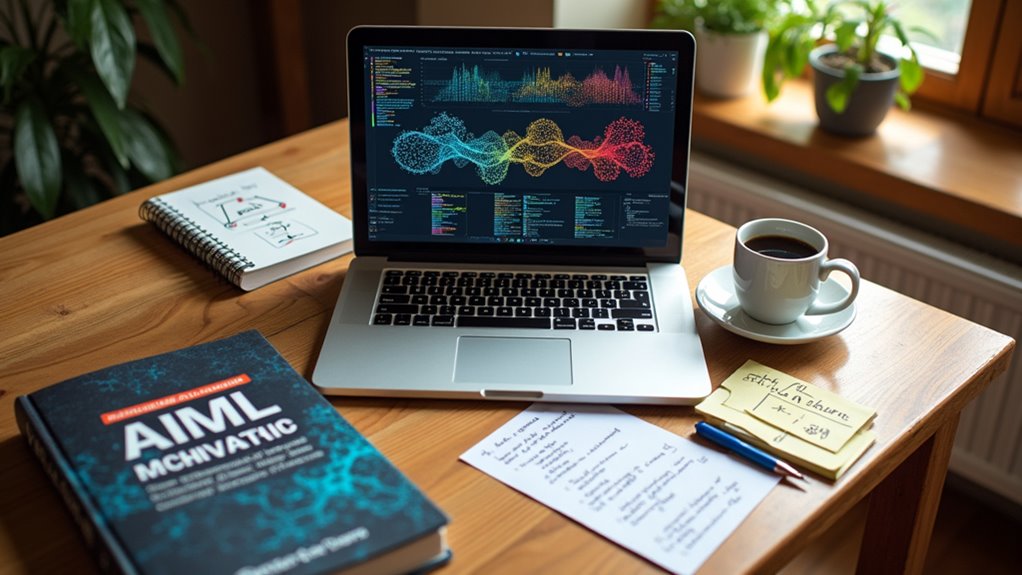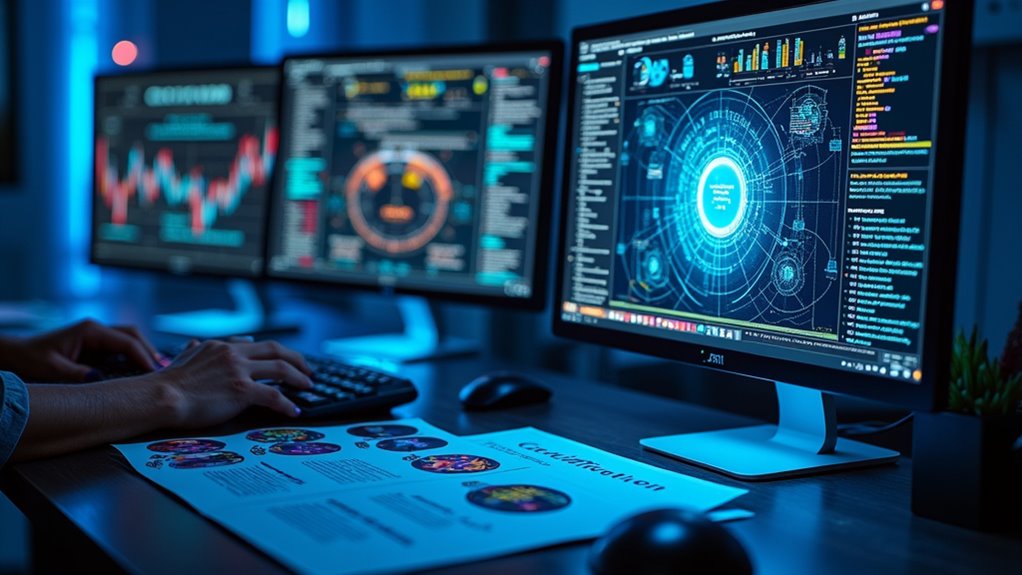Computer systems form the backbone of AI robotics, providing the computational muscle robots need to process massive sensor data in real-time. Advanced hardware accelerators crunch numbers while edge computing eliminates pesky delays. Without these systems, your robot wouldn’t recognize a coffee cup from your cat. Digital twins let engineers perfect robot behavior before deployment, preventing costly mistakes. Cloud connectivity expands capabilities while specialized vision systems guarantee robots work safely alongside humans. Discover how these technological foundations are revolutionizing industries beyond imagination.
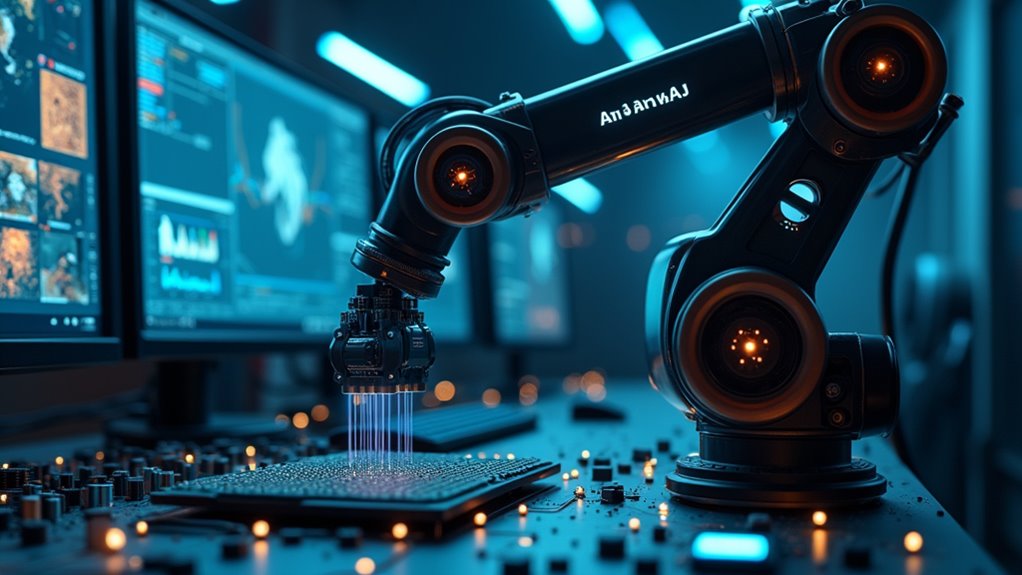
The intersection of artificial intelligence and robotics represents a seismic shift in how machines operate in our world. Modern AI robotics simply couldn’t function without sophisticated computer systems handling the massive AI processing demands. These digital brains crunch through terabytes of sensor data, making split-second decisions that once required human intervention. Robotics simulation platforms like NVIDIA Omniverse aren’t just fancy tech toys—they’re essential testing grounds where AI algorithms learn to navigate our messy, unpredictable world without causing real-world disasters.
Behind every graceful robot movement lies an intricate dance of computing power. Advanced computing systems form the backbone of AI robotics, with specialized hardware accelerators tackling the intensive calculations required for physical AI training. These systems don’t just make robots smart; they make them responsive, adaptive, and increasingly human-like in their decision-making capabilities. Convolutional neural networks dramatically enhance object recognition accuracy, allowing robots to reliably identify and manipulate objects in complex environments.
The computational choreography behind robotic motion transforms mathematical equations into fluid, lifelike intelligence.
Cloud connectivity amplifies these abilities by connecting robots to vast computational resources beyond their physical bodies. The relationship between humans and AI-powered robots continues evolving through technological infrastructure. Edge computing systems like NVIDIA Jetson bring AI processing directly to robots, eliminating communication delays that would make human-robot collaboration clumsy or dangerous. Similar to how generative design algorithms revolutionize engineering processes, AI robotics transforms how machines interact with and adapt to their environments.
Digital twins—virtual replicas of physical robots—allow engineers to perfect robot behavior before deployment, saving time and preventing costly mistakes. Computer vision systems enable robots to “see” and interpret their surroundings with remarkable accuracy. This isn’t just cool tech—it’s what allows cobots to work safely alongside humans in dynamic environments, automatically adjusting their movements to avoid collisions while maintaining productivity. The ethical implementation of these robotics systems requires addressing concerns regarding data privacy and consent when collecting information from users in healthcare applications.
The future success of AI robotics hinges on continued advancement in computing architecture. As robots take on increasingly complex tasks, from precision manufacturing to healthcare assistance, the demand for more powerful, efficient, and adaptable computer systems grows exponentially. These technological foundations, though often invisible to end-users, are what transform robots from programmable machines into intelligent collaborators capable of enhancing human potential across countless industries.
Frequently Asked Questions
What Job Skills Will Become Obsolete Due to AI Robotics?
AI robotics is making several job skills increasingly obsolete.
Manual labor in manufacturing and warehousing faces significant automation pressure as robots handle repetitive physical tasks.
Data entry positions are vanishing rapidly—why pay humans to input information when algorithms can do it faster?
Routine customer service, basic bookkeeping, and assembly line work are all on the chopping block.
Workers in these fields should consider upskilling now, before their résumés become as outdated as floppy disks.
How Are Privacy Concerns Addressed in AI Robotics Deployments?
AI robotics deployments address privacy concerns through multiple strategies.
Companies implement data encryption to secure sensitive information from prying eyes. User consent mechanisms—those annoying but necessary permission screens—ensure people know what data is being collected.
Manufacturers also employ data minimization techniques, anonymization protocols, and comply with regulations like GDPR. Regular security audits help catch vulnerabilities before hackers do.
Despite these efforts, privacy remains an ongoing challenge requiring constant vigilance and technological innovation in the robotics field.
What Ethical Guidelines Govern Autonomous Robotic Decision-Making?
Autonomous robotic decision-making follows several ethical frameworks that prioritize nonmaleficence, human values, and accountability.
Decision algorithms must incorporate machine ethics to avoid harm while respecting privacy and human autonomy.
Think your robot can just do whatever it wants? Think again! Developers must program value alignment into these systems while ensuring transparency.
The Partnership Principle demands that humans maintain responsibility for their robotic partners’ actions.
Ethical governance isn’t optional—it’s essential for maintaining public trust and preventing technology from running amok.
How Affordable Will AI Robotics Become for Small Businesses?
AI robotics will become increasingly affordable for small businesses through a cost analysis lens.
Initial investments of $20,000+ are dropping as refurbished options hit the market at half the price. Market accessibility is improving with subscription models replacing massive upfront costs.
Pre-trained models save thousands compared to custom development. Expect prices to continue falling as technology advances, but don’t hold your breath for dirt-cheap robots tomorrow.
The smart move? Start with free AI tools while planning for future automation.
What Energy Requirements Do Advanced AI Robotic Systems Need?
Advanced AI robotic systems are power-hungry beasts. They demand substantial electricity—typically requiring specialized power supplies ranging from 1-5 kW for industrial models.
Energy sources vary from standard grid connections to battery systems with rapid charging capabilities. Manufacturers are racing to improve power efficiency through specialized hardware and optimized algorithms.
The energy footprint isn’t just an environmental concern; it’s a major operational cost. Want efficient AI robots? Look for newer models with power management features and energy consumption ratings.
